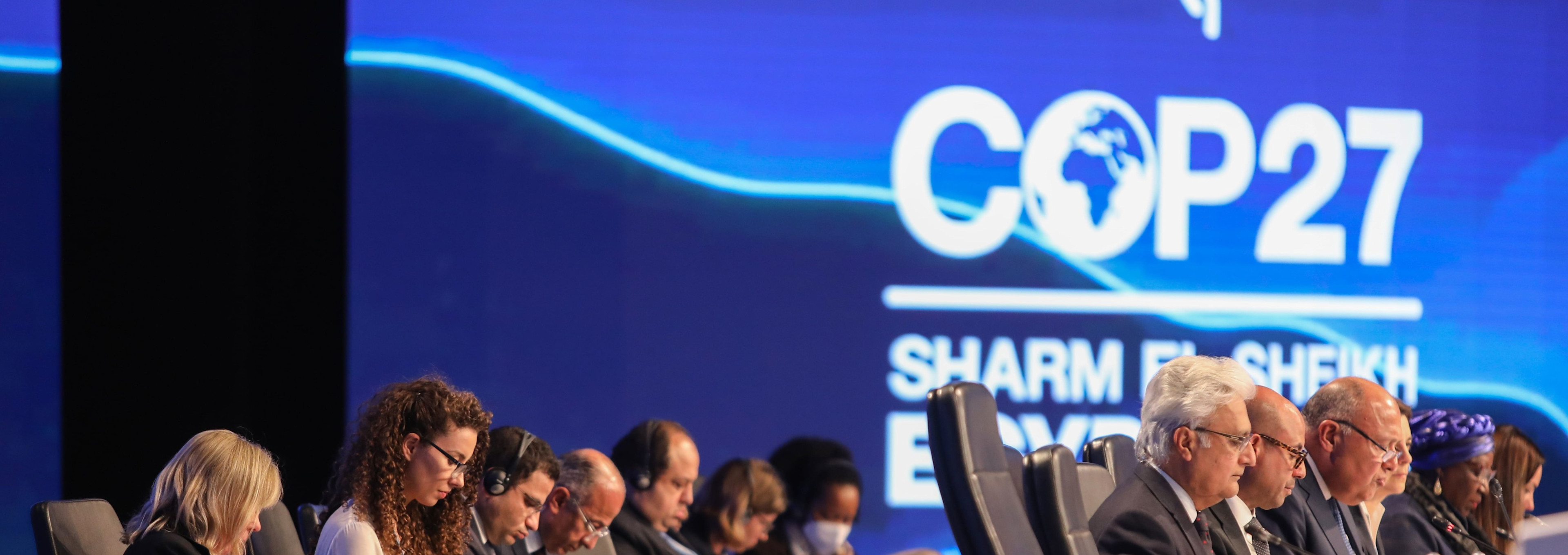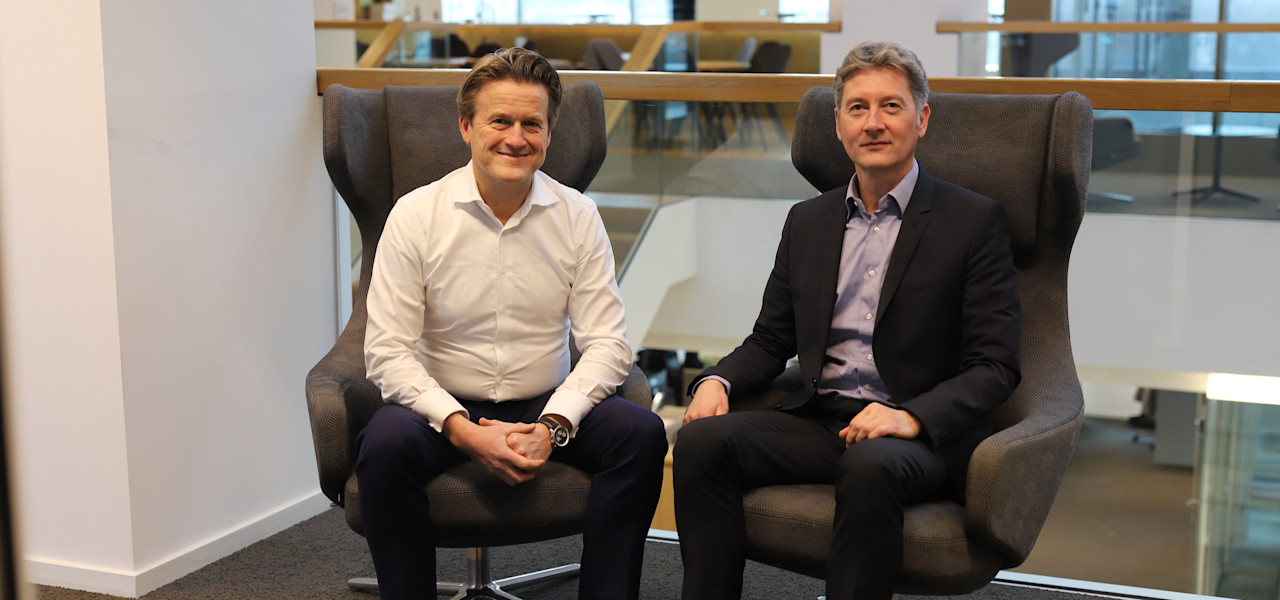

SI Dilemma: Keeping on course for net zero by 2050
The COP27 climate summit delivered a few wins but was disappointing overall. How do we keep on course for net zero in the absence of global cooperation? In our view, the net-zero transition will continue to gain traction, because paradoxically it appears that the lack of global cooperation is helping accelerate the energy transition.
まとめ
- A few wins from COP27 focus on climate finance
- Innovation and investment can help contain global warming to well below 2 °C
- Strong signals that the transition is gaining traction despite world’s problems
The COP27 climate summit took place as countries around the world face crises involving energy and food, inflation, war, and debt stress. With two of the critical parties to successful negotiations – the US and China –not on good speaking terms, the EU’s leadership has also lost credibility due to its return to coal and massively expanded subsidies to fossil fuels. All this in a year in which climate change continues to have a deep impact across the globe, triggering famine in East Africa, industry lockdowns in China and Europe, and making half a million people homeless from floods in Pakistan.
In this context, COP27 focused on two key issues. The first is climate finance. For years already, industrialized countries have broken their promises to support the Global South in carrying the costs of adaptation and mitigation. This year’s summit also addressed loss and damage: rich economies are called upon to take responsibility over the damage that their historical emissions are causing in vulnerable countries. Here, the summit delivered a historic result – the creation of a loss and damage fund – though we believe it will still take much negotiation before it is operational. In the short term, more climate finance may become available from the multilateral financial institutions that are to be reformed as per agreement in Sharm el-Sheikh.
The summit’s second focus was to advance the implementation of the Paris Agreement. Here, it seems we should be grateful that the lack of progress wasn’t an explicit step backwards. The goal of 1.5 °C barely survived the negotiations, and no agreement was reached on the phasing-down of unabated fossil fuels. In sum, a painful standstill.
So, after this COP, where are we now on the road to net zero by 2050? At Robeco, we see the glass as being half full. Certainly, the summit did not yield much in terms of concrete solutions, while global emissions are still on the rise and climate policies still fall short. The summit leaves us heading for 2.5 °C of global warming.
But five years ago, we were heading for 4 °C of global warming. So, there has been progress: a change of course. In this sense, the ratcheting mechanism of the Paris Agreement, in which climate ambitions are periodically beefed up, is doing its job. The proof of the pudding will be next year’s summit in Dubai, when countries will submit new plans based on the global stock-taking of progress so far. As climate policy expands, such as in the US this year, exponential change could be unleashed, as market forces and human ingenuity seek to create value from the transition to net zero.
Take the transition away from unabated fossil fuels. It advanced this year in the midst of the energy crisis. Despite the massive return to coal-fired power in Europe, the International Energy Agency (IEA) is forecasting a mere 1% increase in emissions from energy this year – much less than the increase in 2021. This is because the deployment of renewable energy and electric vehicles has strongly expanded globally. Hence, hidden in the usual statistics on increased global emissions, we can see an accelerated switch to cleaner energy.
サステナビリティに関する最新のインサイトを把握
ロベコのニュースレター(英文)に登録し、サステナブル投資の最新動向を探求しましょう。
Fast-forwarding fossil fuel use
In its latest World Energy Outlook, the IEA concludes that peak fossil fuel usage has been fast-forwarded to before 2030, as countries seek energy security through investments in renewables and energy efficiency. Such policies have been adopted this year across top emitters including the US, EU, India, Australia, South Korea, Japan and China. In particular, the US’s Inflation Reduction Act, with its USD 369 billion support package, will accelerate technological innovation as it enables US-based companies to better compete with Chinese suppliers of renewable technologies.
We see these milestones adding up to a tipping point, where the net-zero transition gains so much traction that it will continue to unfold and gain pace. While keeping global warming limited to 1.5 °C would be an achievement beyond any historical benchmark, innovation and market forces tend to be exponential, not linear, so who knows?
Investing in the transition
What does this mean for investors like Robeco? We are keeping course on net zero by 2050 and continuing to invest in the transition. Our portfolio decarbonization currently stands at -43% against our baseline year-end in 2019. We started the year at -35%, which means that during 2022 we continued to decarbonize, despite the re-carbonization of the market triggered by the increased benchmark weight of the Energy sector.
We should note, however, that such figures provide only a partial picture. Portfolio decarbonization can be the result of one or a few individual issuers entering or exiting our portfolios. It is equally important to look at the companies themselves and how well they are managing their transition. This is measured by our climate traffic light. It assesses how well the top 250 emitters in our investment universe are aligning with the goals of the Paris Agreement.
In our analysis from this year, we see robust transition strategies amongst 27% of companies, while 21% are clearly working on it, and 52% are not doing enough. The latter group is where we focus our engagement and where we may vote against management.
Paris Alignment of top-250 emitters in the Robeco Climate Traffic Light

Transition in the real economy
So far, our decarbonization performance has largely been the result of the investment strategy of our funds. Our investment teams have picked stocks that they assess as creating value, and while doing so have remained comfortably within their carbon targets. This can only continue if the real economy transitions to net zero. This requires climate action across all sectors of the economy, spearheaded by ambitious policy and regulation.
Our role as investors is to engage with investee companies and policy makers, and to direct capital towards companies that are developing climate solutions and away from assets which are at risk of becoming stranded.
The good news is that, in the middle of rising global emissions, political antagonism and yet another disappointing climate summit, we see strong signals that the transition in the market is clearly underway.
SIディベート
重要事項
当資料は情報提供を目的として、Robeco Institutional Asset Management B.V.が作成した英文資料、もしくはその英文資料をロベコ・ジャパン株式会社が翻訳したものです。資料中の個別の金融商品の売買の勧誘や推奨等を目的とするものではありません。記載された情報は十分信頼できるものであると考えておりますが、その正確性、完全性を保証するものではありません。意見や見通しはあくまで作成日における弊社の判断に基づくものであり、今後予告なしに変更されることがあります。運用状況、市場動向、意見等は、過去の一時点あるいは過去の一定期間についてのものであり、過去の実績は将来の運用成果を保証または示唆するものではありません。また、記載された投資方針・戦略等は全ての投資家の皆様に適合するとは限りません。当資料は法律、税務、会計面での助言の提供を意図するものではありません。 ご契約に際しては、必要に応じ専門家にご相談の上、最終的なご判断はお客様ご自身でなさるようお願い致します。 運用を行う資産の評価額は、組入有価証券等の価格、金融市場の相場や金利等の変動、及び組入有価証券の発行体の財務状況による信用力等の影響を受けて変動します。また、外貨建資産に投資する場合は為替変動の影響も受けます。運用によって生じた損益は、全て投資家の皆様に帰属します。したがって投資元本や一定の運用成果が保証されているものではなく、投資元本を上回る損失を被ることがあります。弊社が行う金融商品取引業に係る手数料または報酬は、締結される契約の種類や契約資産額により異なるため、当資料において記載せず別途ご提示させて頂く場合があります。具体的な手数料または報酬の金額・計算方法につきましては弊社担当者へお問合せください。 当資料及び記載されている情報、商品に関する権利は弊社に帰属します。したがって、弊社の書面による同意なくしてその全部もしくは一部を複製またはその他の方法で配布することはご遠慮ください。 商号等: ロベコ・ジャパン株式会社 金融商品取引業者 関東財務局長(金商)第2780号 加入協会: 一般社団法人 日本投資顧問業協会






















